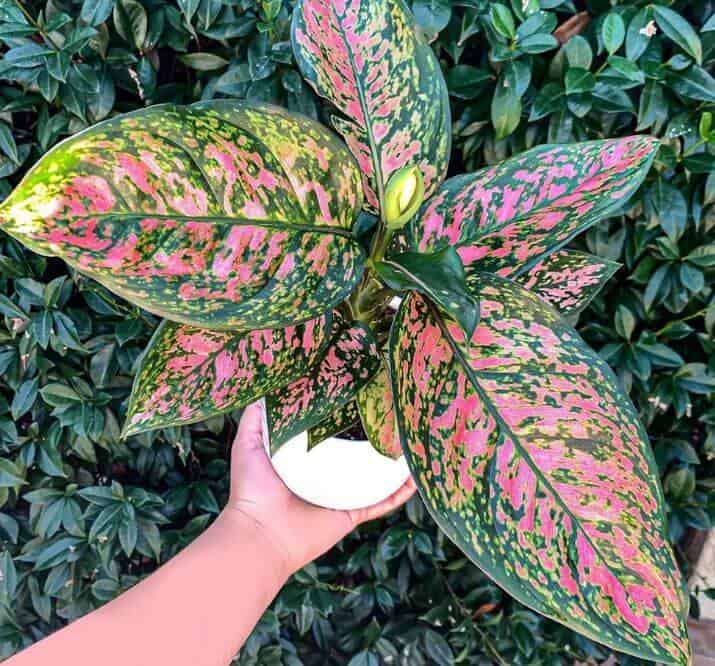Last Updated on January 7, 2023 by a Friendly Gardener
The Aglaonema “Pink Dalmatian” plant is a variety of the Chinese Evergreen. A member of the Araceae family, it requires very little maintenance and will brighten any indoor décor with splashes of pink on foliage. Native to the rainforests in Asia and New Guinea, this herbaceous perennial can be cultivated at any time of the year.
Botanically named the Aglaonema, these plants are among the most popular houseplants around. Varieties include splashes of silver to hints of red on dark green backgrounds. The Pink Dalmationvariety features bright pink spots and speckles. Generously sized, oval-shaped leaves perch on short stems. The Aglaonema is a slow grower that prefers filtered light or shady spots, making it ideal for indoor cultivation.
The Pink Dalmatian produces white blooms similar to a peace Lily’s flowers, although this is very uncommon with indoor cultivation.
If you have a pink-themed bedroom, bathroom, or office, this is a fun plant to include. You may just want a splash of color, and the pink dalmatian will provide just that.
Pink Dalmatian Plant Care

When introducing a Pink Dalmatian plant into your home garden, keep the following recommendations in mind.
Soil
While not particularly demanding, the Pink Dalmatian plant likes well-draining potting soil with a slightly acidic pH measuring between 5.6 and 6.5. Plant containers should have plenty of drainage holes. To guarantee sufficient drainage, add in a fistful of perlite or coarse sand to your potting soil.
Light
Ideal lighting conditions for this plant include bright indirect sunlight. To maintain the bright pink spots, bright filtered light is necessary. Do not expose your Pink Dalmatian plant to full direct sunlight as this will cause the leaves to scorch. The Pink Dalmatian can tolerate lower lighting conditions but the variegation on foliage will be less prominent.
Water
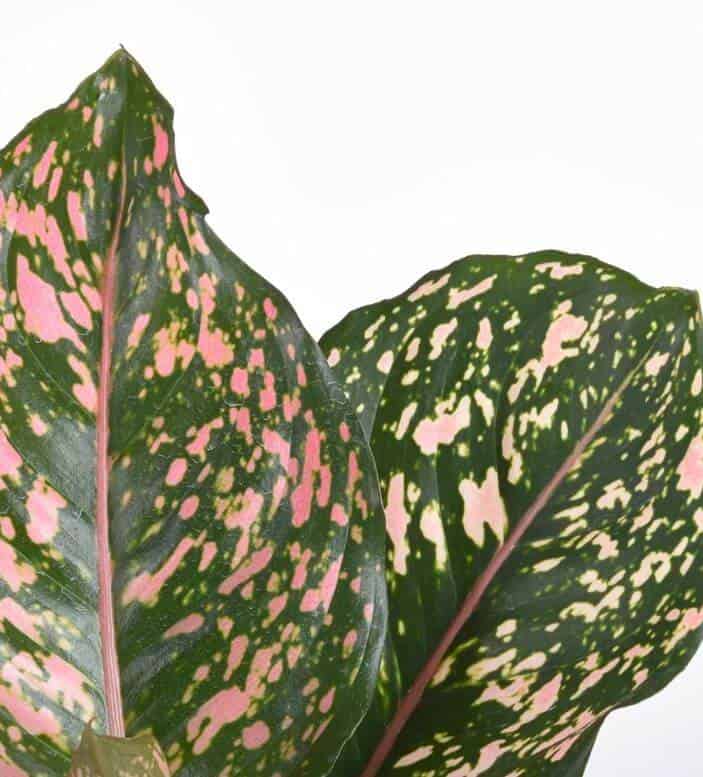
The Pink Dalmatian prefers an evenly moist soil bed during its growing season in the spring and summer, so a weekly watering schedule is optimal. These plants should not be left standing in soggy soil or water. Let the soil bed dry out between waterings in the fall and winter. This plant is a bit drought resistant, so it can survive should you forget to water.
Your plant may show a bit of sensitivity to salt buildup in its soil, so watering with collected rainwater or distilled water will help you avoid this problem.
Humidity
As a rainforest plant, the Algaonema likes humidity, so a greenhouse environment is ideal. A steamy bathroom or a kitchen where humidity levels tend to be higher would be a good choice. For other home locations, consider using a space humidifier or a pebble tray underneath your plant’s container. If this is not possible, position a small bowl or glass of water near the plant to improve area humidity. Grouping plants together also helps. If the humidity is too low, leaf tips may turn brown.
Temperature
The Pink Dalmatian plant needs an average temperature of approximately 70°F. It should not be exposed to temperatures that drop below 60°F. Drafty spots should be avoided at all costs, so your plant should not be positioned near vents, whether air conditioning or heating. Drafts can contribute to leaves becoming brown.
Feeding
While the Chinese Evergreen is not a big feeder, it will benefit from a liquid houseplant fertilizer applied monthly during its growing season in the spring and summer months. An NPK 3-1-2 fertilizer diluted to half the recommended strength should be sufficient. Loosen topsoil a bit when fertilizing, so that absorption is facilitated but do so without disturbing the root ball.
Pruning
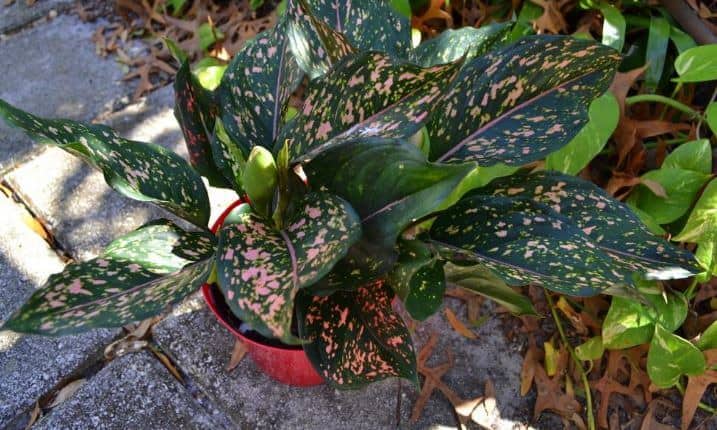
The Pink Dalmatian plant generally does not require pruning, but should it take on a leggy appearance, you can cut it back.
Potting and Repotting
Aglaonema will enjoy being a tiny bit rootbound, so plan on repotting your Pink Dalmatian plant every two years.
Pink Dalmatian Plant Propagation
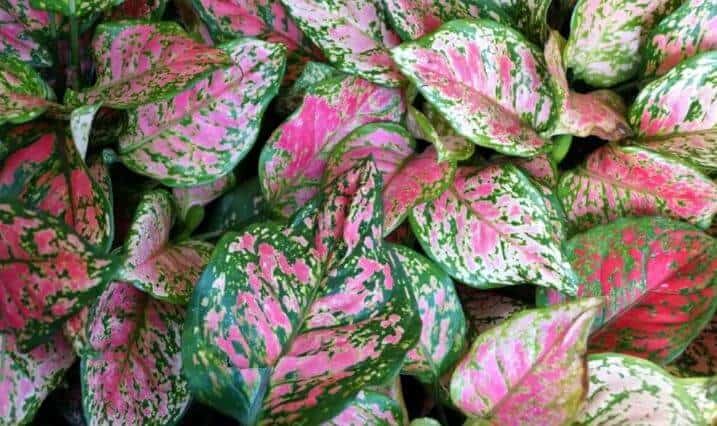
A Pink Dalmatian is easily propagated through either root division or stem cuttings. Root division will prove to be the easiest. When repotting your plant, divide the plant into sections with roots attached to each section and repot in individual pots.
Stem-cutting propagation will require trimming a piece of stem that is several inches in length. Dip the cut end of the stem cutting in rooting hormone and insert it into a pot of fresh potting soil. Maintain a moist soil bed while waiting for root development. The cutting will need about a month to grow its root system. As an alternative, you can cultivate the stem by cutting in water and changing the water every few days. Once roots have developed you can transplant the cutting to a container with soil.
Pink Dalmatian Plant Problems
The Pink Dalmatian, like all aglaonemas, is relatively resistant to problems such as pest infestations and disease. Nonetheless, aphids, mealy bugs, scale, and spider mites may find your plant attractive. Initially remove pests manually or with a strong spray of water or shower. Afterward, treat the pink Dalmatian with insecticidal soap or with organic Neem oil.
The most common illness afflicting the Pink Dalmatian is root rot which is a result of overwatering. Repot your plant in fresh soil after removing any rotten or affected roots. Wait at least a week before watering anew. The Aglaonema are also susceptible to bacterial infections including Xanthomonas and Erwinia.
One final problem may be the clogging of foliage pores. Because leaves are quite large, dust will build up on surfaces. Use a damp soft cloth to wipe down leaf surfaces and clean them.
Pink Dalmatian Plant Toxicity
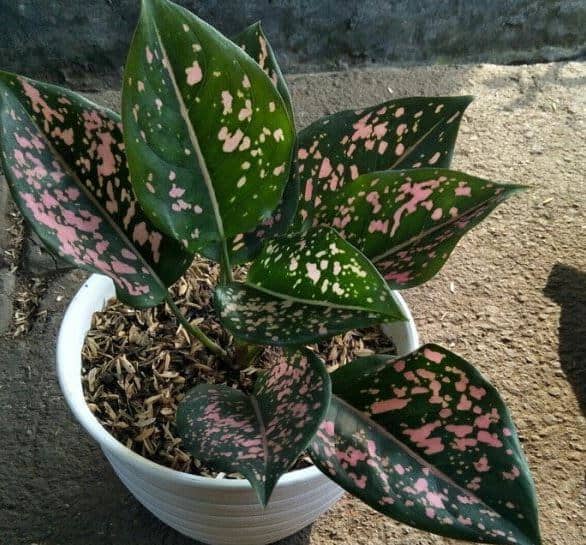
Unfortunately, this lovely houseplant is toxic to family dogs and cats due to its containing calcium oxalate crystals. Crystals are released if an animal bites or chews on foliage or stems. It will cause burning and swelling if chewed or ingested. If your pet has tasted your plant, a veterinary visit is recommended.
Typical oxalate poisoning symptoms include diarrhea, drooling, localized mouth pain or blistering, loss of appetite, swelling, as well as nausea, and vomiting. Because the taste is considered bitter, pets will generally stop chewing after the first bite.

